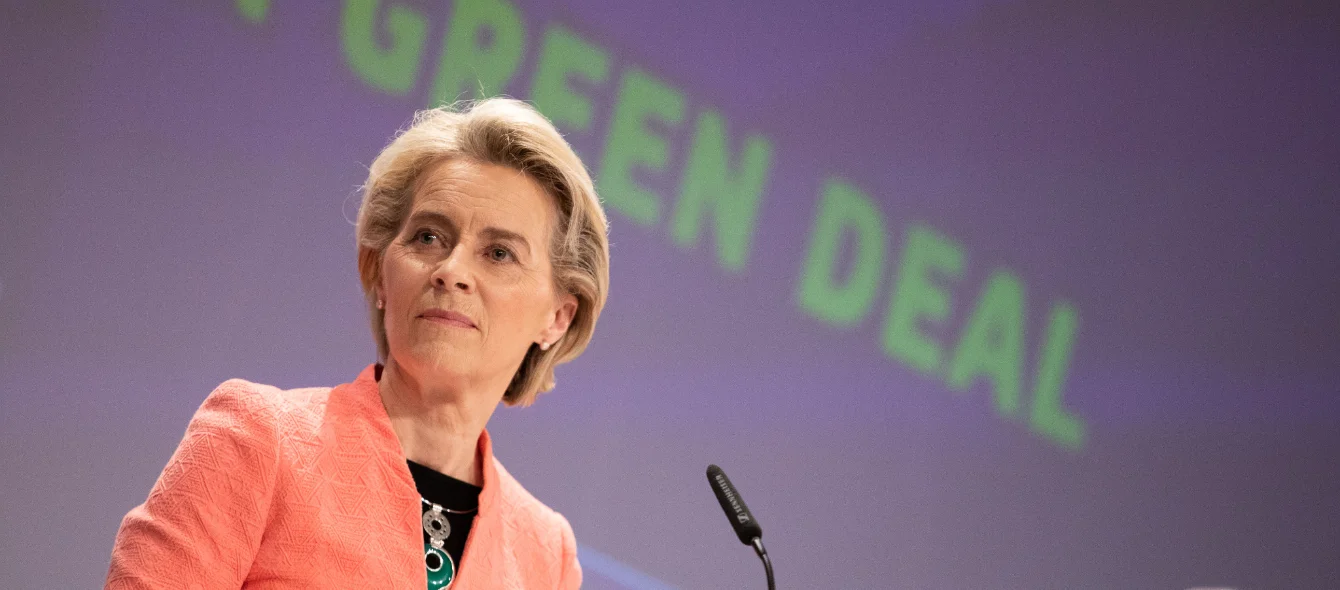The European Commission on July 14 unveiled a huge package of legislative proposals designed to bring EU policy into line with the bloc’s new greenhouse gas (GHG) target. Formerly set at a 40% reduction in emissions by 2030, from 1990 levels, the EU recently adopted a more ambitious target of 55% to set it on course for carbon neutrality by 2050.
Emissions trading
To achieve the higher GHG reduction target, emissions from the sectors covered by the EU Emissions Trading System (ETS) must fall faster. The ETS is a cap-and-trade system, with the cap setting the overall number of carbon allowances traded. This cap is reduced each year by the ‘linear reduction factor’, which is currently set at 2.2%.
The Commission proposes a new reduction rate of 4.2%/yr. When this enters into force there would also be a one-off downward adjustment, as if the new 4.2% rate had been applied from 2021. By limiting supply, these measures should strengthen the price of carbon allowances, providing a stronger incentive to reduce emissions.
Other reforms to the system include gradually bringing EU shipping into the ETS in the period 2023-25. A new ETS will also be established for the transport and buildings sectors, focussed on upstream suppliers rather than consumers. This will start in 2025 and could eventually be merged with the existing ETS. In addition, some industries currently benefit from the free allocation of carbon allowances, a measure designed to protect them from external competition. Free allocations are to be curbed and for some sectors removed altogether.
Carbon Border
A new and closely-related proposal is the Carbon Border Adjustment Mechanism (CBAM). This will create a carbon price for products imported into the EU, so they compete on a level playing field with domestic companies.
The sectors covered by CBAM initially are iron, steel, cement, aluminium, fertilizers and power. Free allocation of carbon allowances for these sectors will be phased out as CBAM is phased in. The proposed start-up date for a transitional introduction is 2023.
Renewable Energy Directive
The EU’s Renewable Energy Directive will also undergo change. Currently, the EU has a binding target of renewables making up 32% of gross final energy consumption by 2030. The Commission wants to raise this to 40% to align with the new overall 55% emissions reduction target. Meeting this target would require more support for a much-accelerated construction of renewable energy capacity. For example, industry association WindEurope estimates that the rate of wind capacity additions in the EU, currently projected at 15 GW a year to 2025, would have to double to 30 GW/yr to 2030.
Reflecting the need for more renewable energy, the RED reforms include higher targets for renewables’ share of heating, cooling and transport. They also contain a proposal for a binding target for Renewable Fuels of Non-Biological Origin (RFNBOs). These are renewable fuels made from something other than biomass, for example green hydrogen.
Hydrogen use
The Commission’s push for increased hydrogen use emerges in other parts of the package, notably a proposal for mandatory targets for Alternative Fuels Infrastructure. In addition to the large-scale roll out of electrical recharging along the EU’s most important transport networks, the Commission wants, by 2030, publicly-accessible hydrogen refuelling stations every 150 kilometres in each direction. Liquid hydrogen supply should be available every 450 km, and there should be at least one hydrogen refuelling station at every urban node.
New targets for industrial use of hydrogen should also support development of a market for the fuel. Transport sector decarbonisation will be further encouraged by stricter CO2 performance targets for cars and light commercial vehicles. In particular, the proposed CO2 standards imply the end of new sales of gasoline and diesel cars and vans from 2035.
Energy taxation
Underpinning these measures is a proposal to reform EU energy taxation. The principle is simple: the most polluting fuels should be taxed the most. The Commission wants to remove tax exemptions on fossil fuel use in the maritime and aviation sectors, set minimum tax rates based on the energy content and environmental performance of fuels, and ensure that electricity is taxed least.
This latter measure reflects success in power sector decarbonisation and the critical role renewable electricity will play in reducing transport sector and industrial emissions. In particular, the Commission proposes that sustainable alternative fuels and electricity should benefit from a zero minimum rate for the next ten years. These proposals would create a framework in which member states could create ‘environmentally-tailored’ tax systems that provide price signals to consumers to adopt more sustainable ways of living.
All in all, the Commission’s mammoth ‘Fit for 55’ package comprises 16 major pieces of legislation comprising new proposals and amendments to existing policy. They will have to be agreed by both the European Parliament and the Council of Ministers, with some measures, for example regarding energy taxation, requiring unanimity in the Council. It is expected that negotiations between the institutions could take up to two years.
Photo credit: European Union, 2021
